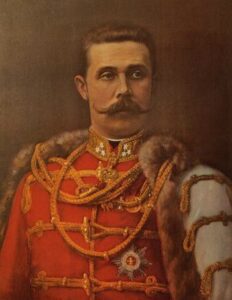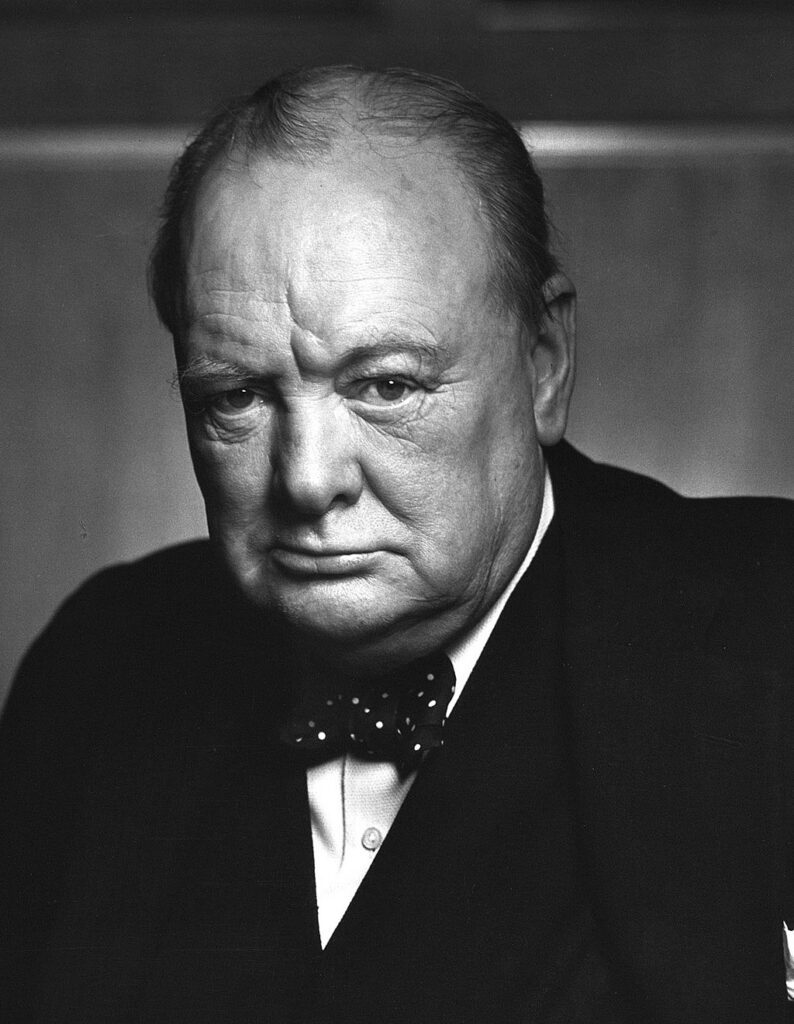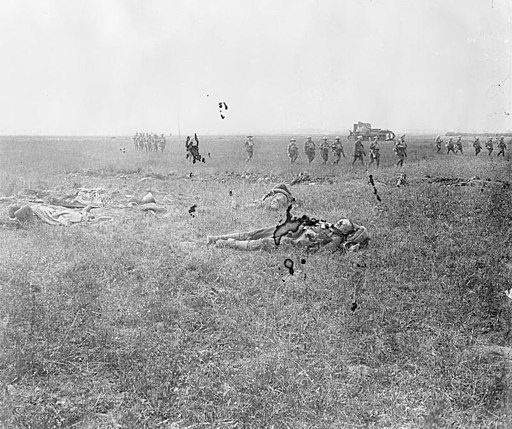
First World War Casualties on the Western Front. Author Australian official photographer. Wikimedia Commons
When Was World War 1: Key Dates, Events, and Timelines
World War I lasted between 28 July 1914 and 11 November 1918. Historians also believe that it is one of the deadliest global conflicts in history. It was not just a war between two countries. It was fought between two coalitions, the first being the Allies, whose key members included France, the United Kingdom, Russia, Italy, Japan, and their respective colonial empires, with the United States joining as an associated power in 1917. They faced the Central Powers, primarily Germany, Austria-Hungary, and the Ottoman Empire, with fighting occurring throughout Europe, the Middle East, Africa, the Pacific, and parts of Asia.
During this period an estimated 9 million soldiers lost their lives fighting, plus another 23 million were wounded, while 5 million civilians died as a result of military action, hunger, and disease.
1. It Was Triggered By The Assassination of Prince Archduke Franz Ferdinand In June 1914

Archduke Franz Ferdinand. Author unknown painter. Wikimedia Commons
Historians have documented World War I events extensively. It is said that before the war started there was tension in Serbia just waiting to be ignited. An unexpected event on 28 June 1914 is thought to have been the cause of the war. On this date, Prince Archduke Franz Ferdinand of the Austro-Hungarian Empire was visiting Sarajevo, the capital of the former Bosnia province with his wife. As they were moving around, an incensed Bosnian student named Gavrilo Princip, decided to open fire killing both of them instantly. This event sparked a series of accusations from Austria-Hungary and unrest. It eventually led the European powers into war, sucked in by a web of military alliances.
Get more interesting stories here
2. Austria Decided To Retaliate on 28 July 1914

British Troops World War I. Author Original uploader was Мико at bg. Wikipedia. Wikimedia Commons
As indicated earlier the killing of an Austro-Hungarian prince is responsible for sparking the war. During this time, Austria decided to retaliate by declaring war on Serbia on 28 July 1914. After two days as alliances were being built across Europe, Serbia’s ally and protector, Russia mobilized its army to attack Austria. On the other side, Germany which was an ally of Austria also mobilized its troops to help them fight back beginning on 1 August 2014. France then joined Russia. At this time the war was getting bigger as Germany now declared war on Russia the same day and France and Belgium on 3 August 1914.
With the turn of events, Britain could not sit back as the war escalated and they decided to join in as allies of France and Russia to fight Germany. The reason they gave was that Germany was violating the neutrality of Belgium.
3. Battle Of The Marne Was Next In Early September 1914
By early September 1914 daggers were already drawn and World War I was now at its intense stage. Germany and France were in the middle of the warfare. On 6 September 2014, the two nations launched launch a desperate counterattack along the Marne River, northeast of the capital. With the rail network around Paris in chaos, the military governor made arrangements for 700 taxis to bring 6,000 troops to the battlefront in the first military use of motorized transportation in history.
Interestingly, Germany with their might was forced to pull back in this fierce fight. At the end of this phase there was a record of nearly 100,000 deaths or missing persons on both sides and double this number of injured.
4. Winston Churchill Failed To Capture The Ottoman Empire

Sir Winston Churchill.Author BiblioArchives / LibraryArchives. Wikimedia Commons
On 25 April 1915, British and French troops landed on the Gallipoli peninsula in the Dardanelles Strait in Germany-allied Ottoman Turkey. The Ottoman Empire outsmarted them by closing the straits at the start of the war, cutting off Russia from the Mediterranean. With Winston Churchill leading the charges it was expected that the allied forces would successfully be able to attack Germany and Austria from the east and establish a link with Russia. Surprisingly, they lost with 180,000 deaths recorded before they withdrew in January 1916.
Read more here
5. The Longest War Was Fought Between February and December 1916
By 25 February 1916 Germany and France have sworn enemies and were the brains behind the offenses. German forces launched an offensive at Verdun, east of Paris, to “bleed France white” with an intention of forcing France to the negotiating table but were repulsed. By the time the fighting ended in December 1916, it had taken more than 300 days. It also recorded more than 300,000 deaths altogether, each side losing more or less the same number, and hundreds of thousands more were wounded. It became the longest of the war’s Western Front.
6. The Bloodiest War Was Fought From July 1916
On 1 July 1916 as Allied forces mainly the British aimed to relieve pressure on the French, who were on the rack in Verdun, by attacking the Germans hundreds of kilometers to the northwest, around the Somme River. The five-month battle became the deadliest in Britain’s history, with 20,000 dead or missing in just the first hours, and 40,000 wounded. By the time the war was over, little progress had been made in terms of offensive and more than a million people lost their lives after 140 days.
Find more stories here
7. United States Entered The War On 6 April 1917
In January 1917 Germany under pressure from a British sea blockade decided to attack British merchant vessels with U-boat submarines, aiming to throttle the island. This prompted the United States to enter the conflict to fight the Germans on 6 April 1917. Two months later the first US deployment arrived at the French port of Saint-Nazaire. With a strong force of one million US troops, the war lasted up to mid-1918. The result was two million deaths recorded out of which there were 117,000 US soldiers.
8. The French Soldiers’ Mutiny Was Also Reported With Dire Consequences
As the war continued having devastating effects, the French who had fought from the beginning yet to give up. In mid-April 1917, they sent one million army personnel into battle against the Germans at Chemin des Dames in Picardy. Unfortunately, the Germans were too strong for them yet again. One month later they had recorded 100,000 casualties already. With this came a French soldier’s revolt involving 30,000-40,000 soldiers in various mutinies lasting a month. Later, General Philippe Petain successfully managed to bring it to a halt. The mutineers were not lucky as 554 were sentenced to death and 49 were executed.
9. Russia Surrendered In March 1918
It is reported that between 1914 and 1917 Russia lost more than two million soldiers and officers on the Eastern Front where its poorly equipped forces are decimated. As a consequence, the conflict became highly unpopular, leading to the March 1917 revolutions, under the regime of Nicholas II, Russia’s last tsar. There was a second revolution a few months later and Vladimir Lenin’s Bolsheviks seized power. Their first decision is to seek a way out of the war. By 15 December, Lenin had concluded an armistice with Germany after ‘The Brest-Litovsk treaty’ in March 1918. According to this treaty, Russia surrendered huge chunks of its western territories to Germany including Poland, the Baltic States, and Finland.
Read more here
10. The End Of World War I Was Marked By Germany’s Retreat On 9 November 2018

German Troops World War I. Author Nationaal Archief. Wikimedia Commons
1918 proved to be a remarkable year in World War I. Hit hard by four major German offensives in early 1918; the Allies together with the US fought back on 18 July, using tanks on a large scale to make the vital breakthrough that had eluded them for so long. Planned by French forces commander General Ferdinand Foch, it changed the course of the war, forcing a German retreat on all sides.
As this was happening, Bulgaria agreed on an armistice by the end of September; Austria was defeated in late October; and Turkey was forced to call a halt a few days later. Germany was in turmoil and Kaiser Wilhelm II was forced to surrender on 9 November 2018. This marked halted hostilities; Germany was to evacuate large areas it had occupied. A wounded Germany was also to surrender vast amounts of war material and all Allied prisoners of war were released. This marked the end of World War I.
Planning a trip to Paris ? Get ready !
These are Amazon’s best-selling travel products that you may need for coming to Paris.
Bookstore
- The best travel book : Rick Steves – Paris 2023 – Learn more here
- Fodor’s Paris 2024 – Learn more here
Travel Gear
- Venture Pal Lightweight Backpack – Learn more here
- Samsonite Winfield 2 28″ Luggage – Learn more here
- Swig Savvy’s Stainless Steel Insulated Water Bottle – Learn more here
Check Amazon’s best-seller list for the most popular travel accessories. We sometimes read this list just to find out what new travel products people are buying.









